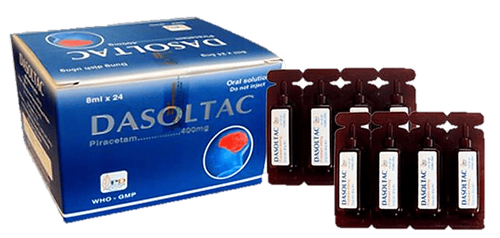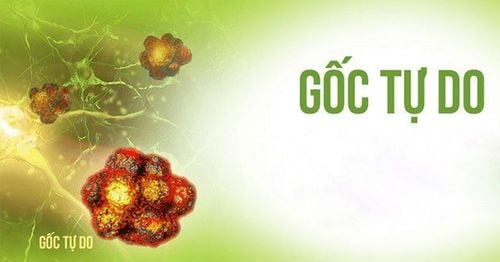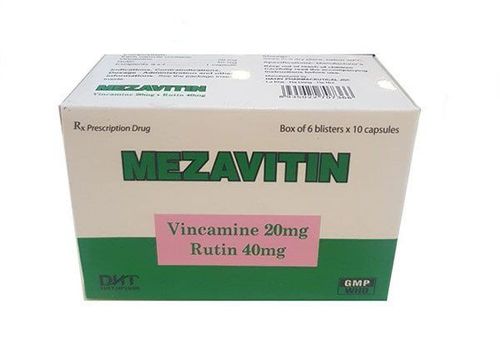This is an automatically translated article.
Pietram 10 is a drug used to increase brain activity, increase nerve conduction. To use the drug effectively, patients need to learn some information about the uses, doses and notes when using Pietram 10 in the article below.
1. What does Pietram 10 do?
Pietram 10 drug has the main ingredient Piracetam 10g and excipients just enough 50ml. The drug is packaged as a transparent solution in a glass vial with a tight-fitting stopper.
Piracetam is a substance that has the ability to help increase the metabolism of nerve cells. It acts on neurotransmitters such as Acetylcholine, Noradrenalin, Dopamine,... Therefore, ensuring nerve cells work properly. Piracetam also enhances cerebral circulation, reduces hypoxia in the brain, helps lower the risk of ischemia, increases glucose utilization/energy synthesis in the brain, and facilitates the Pentose pathway.
In addition, Piracetam also has some other effects such as increasing the release of Dopamine, helping to improve memory, preventing platelet aggregation and myoclonus. However, Piracetam does not have sedative and pain-relieving effects.
2. Indications and contraindications of Pietram 10
Pietram 10 is used in the following cases:
Elderly people with memory loss, dizziness, lack of alertness, behavioral disorders, dementia. Alcoholics. Cerebral ischemic sequelae. Stroke due to acute ischemic cause. Children with dyslexia. Myoclonic tremor involves the cerebral cortex. Often used in combination or as monotherapy. Persons suffering from vertigo or associated disturbance of balance, unless the above condition is due to vasomotor or psychiatric causes. Sickle cell anemia due to Piracetam. Do not use Pietram 10 for the following subjects:
People with a history of hypersensitivity to Piracetam or to any of the excipients of the drug. You need to read the ingredients of the excipients carefully to avoid the risk of an allergic reaction when taking the drug. People with severe kidney failure. Huntington's disease. Brain hemorrhage.
3. How to use and dose Pietram 10
How to use:
The drug is administered by intravenous infusion. Intravenous administration is performed by medical personnel. Dosage:
The usual dose is from 30 - 160mg/kg/day, divided equally into 2 - 4 times depending on indications. Severe cases can be used up to 12g/day by intravenous infusion. Alcoholism: The starting dose is 12g/day. The maintenance dose is 2.4g/day. Poor cognition due to traumatic brain injury: The starting dose is 9-12g/day as indicated. The maintenance dose is 2.4g/day divided into 2 to 4 times. Sickle cell anemia: The dose is 160 mg/kg body weight/day, divided equally into 4 times. Myoclonic cortical myoclonus: 7.2g/day, divided into 2 to 3 times as prescribed by the doctor. Depending on the patient's condition, it can be increased by 4.8g per day to a maximum dose of 20g/day. Thereafter, the dose of concomitant medications can be gradually reduced. Children for treatment of dyslexia: The dose for children over 8 years old and adolescents is 3.2g/kg/day, divided into 2 doses and administered throughout the school year. Renal impairment: Adjust dose according to the clearance of the drug:
Creatinine clearance from 40 to 60ml/min: Take 1⁄2 of the normal dose. Creatinine clearance from 20 to 40ml/min: Take 1⁄4 of the normal dose. Liver failure :
Take the usual dose. Elderly people:
Adjust dose according to the degree of renal failure.
4. Undesirable effects of Pietram 10
The side effects you may experience have been reported as follows:
Common: Fatigue, diarrhea, nausea, headache, somnolence or insomnia, irritability. Uncommon: Dizziness, muscle tremors, increased libido. When using the drug, if you experience any unusual symptoms, you should immediately notify your doctor / pharmacist for appropriate treatment.
5. Note when using Pietram 10
The drug is used under the doctor's prescription, you do not arbitrarily perform the infusion at home. Caution should be exercised in the elderly and in renal impairment. Because the drug is completely eliminated by the kidney. For myoclonic tremor: Do not stop taking the drug suddenly as this can cause a seizure. Use in pregnancy and lactation: Piracetam can cross the placental barrier and into breast milk. Therefore, it should not be used for these subjects, only when the benefits outweigh the risks. People who drive and operate machinery: Pietram 10 when taken can cause drowsiness and fatigue, affecting the ability to concentrate at work. Therefore, you should not use it for driving and operating machinery to prevent possible accidents. Do not use when the syringe is discolored, opaque, cracked; Do not use past the expiration date. Drug Interactions: Interactions with Piracetam have been found to include shared thyroid hormone causing confusion, sleep disturbances; Warfarin may increase Prothrombin time. In summary, Pietram 10 is a drug that is indicated and used in medical facilities. To ensure safety for your health and maximize the effectiveness of your treatment, you need to take Pietram 10 exactly as directed by your doctor.
Please dial HOTLINE for more information or register for an appointment HERE. Download MyVinmec app to make appointments faster and to manage your bookings easily.













